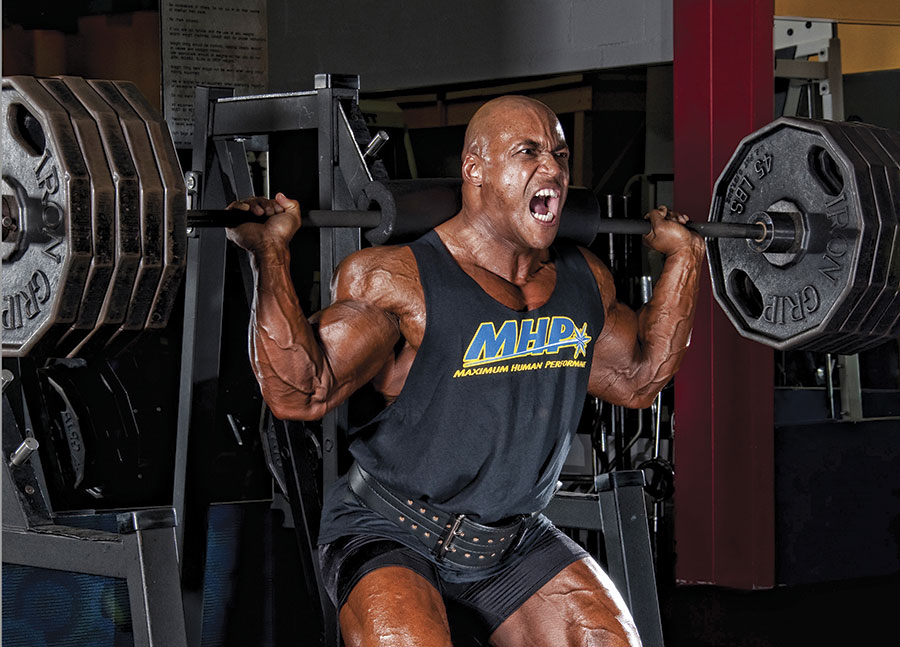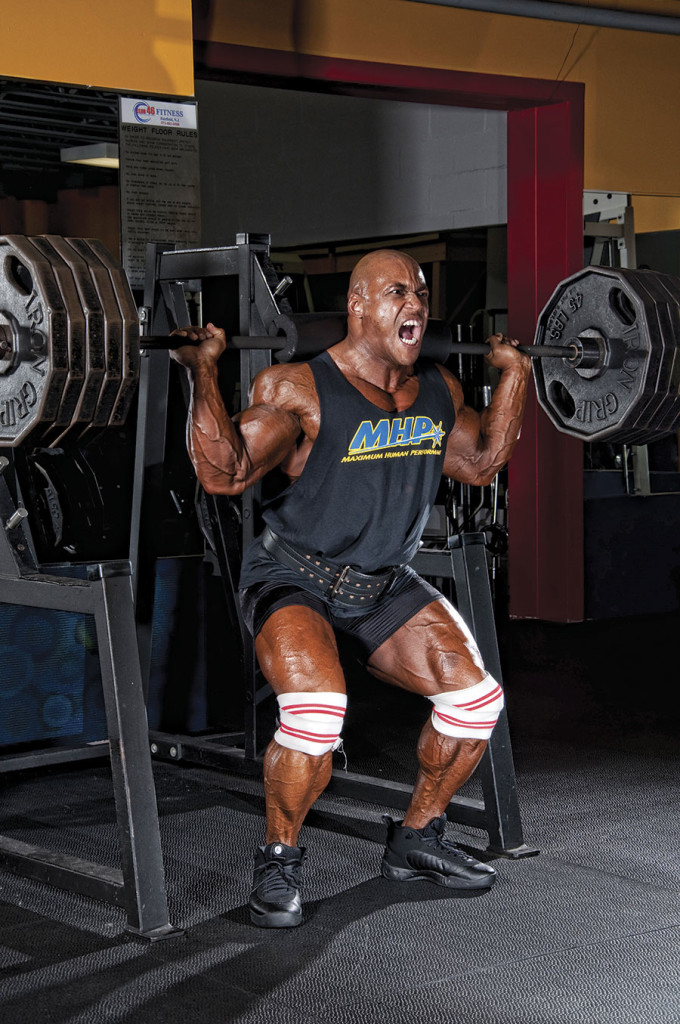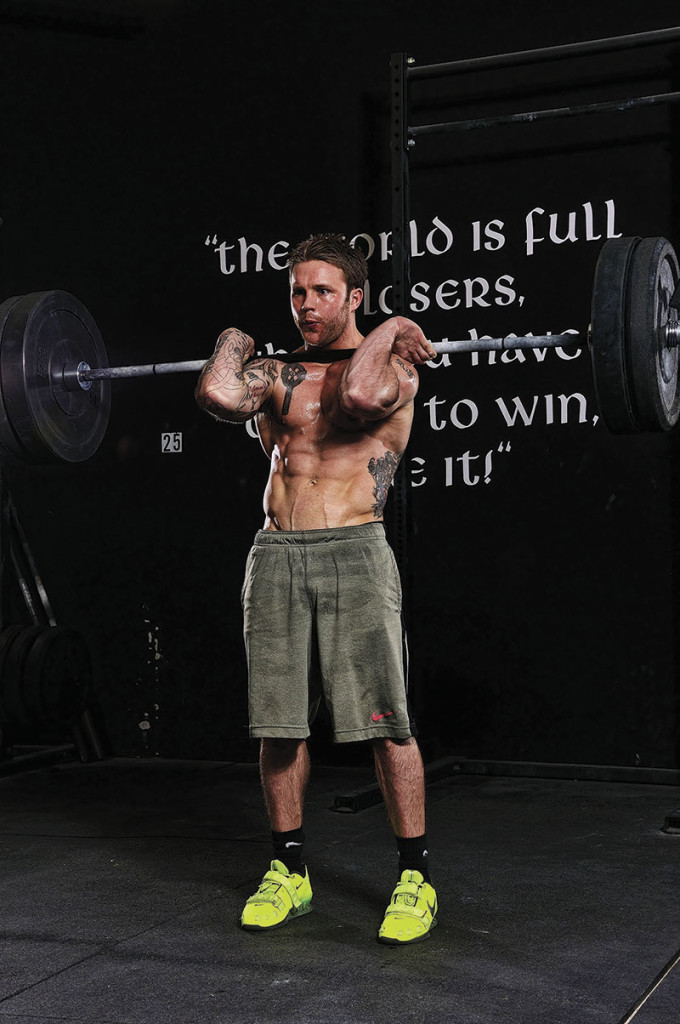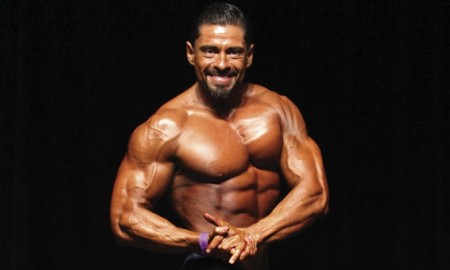


There is no exercise that trains the body to the same degree as putting a heavy barbell on your back and taking it for a ride. If aesthetics are your goal, squats provide the necessary pump and muscle mass needed to show off your “wheels.” If you’re an athlete, then squats are your ticket to greater strength, power, endurance, and durability. Every major pro, collegiate, and performance training facility incorporates some type of squat in their training programs. Research also shows that because your testosterone levels shoot up when you squat, total-body strength gains are common during a dedicated squatting phase.
Parallel squats (thighs parallel to floor) are a must if you want to get the full benefits from this exercise. However, due to individual differences in limb length, flexibility, and mobility issues, squatting to parallel can be a painful burden for some. With bone length being unfixable, the good news is that tissue length and joint restriction can be altered with the right types of exercises. The actual protocol needed to increase range of motion in your “squatting joints” is out of the scope of the article, but we’ll focus on the different variations accompanied with squatting and the specific benefits associated with each.
Low-Bar Back Squats
Low-bar back squats are commonly used by those who put huge loads on the bar. When you look at competitive powerlifters, the majority of them use the low-bar position. This squat is achieved by placing the bar beneath the traps and on top of the rear deltoids.
No matter the style of squat you choose to use, mechanical efficiency needs to be a priority. Always aim to have the bar directly vertical of the middle of your foot. If the bar deviates from this position, you set yourself up for a mechanical disadvantage that gets dangerous with a heavy load.
Low-bar back squats cause the angle of the torso to shift forward in order to keep that foot and bar in the vertical relationship mentioned above. This also affects the lower body in which the angle of the knees decrease, thereby resulting in the athlete having to “sit back” farther, a motion that engages the hamstrings and glutes more than the other styles of squats. Low-bar squats are said to use more muscle recruitment and place a premium on the posterior chain, and tend to be the favored squat for strength athletes.

High-Bar Back Squats
High-bar back squats are typically the squat of choice for bodybuilders and physique athletes. I tend to program high-bar back squats for my clients who train for aesthetic reasons (size and shape), since this style of squat places a huge emphasis on the quads, resulting in a great pump. High-bar squats are also a terrific accessory movement for powerlifters. The increased angle of the knee and ankle at the bottom, as well as the more upright torso necessary to achieve that vertical relationship between the bar and foot, results in a huge emphasis being placed on the anterior (front) part of the thigh.
High-bar back squats are the chosen style for Olympic weightlifters since it closely mimics the receiving position during the “catch” phase of the clean and jerk event. High-bar back squats place an emphasis on ankle mobility (or your lack thereof). So if you have a hard time squatting in this manner due to your ankles being jammed up, make sure you work on increasing your tissue quality and flexibility around your ankles to get the full benefit of the exercise.
Front Squats
Front squats are hardly ever seen in gyms anymore because you can’t lift as much weight and they can be somewhat uncomfortable. Many people don’t have the flexibility to hold the bar in the “rack” position with elbows directly forward of the hands. When they try the cross-arm position, the weight falls off their shoulders so they often abandon the exercise altogether.
Front squats hurt, but if you can get past the initial pain associated with them, they will serve your training well. This front-load position is closely related to the high-bar back squat because it places a larger stress on the quads, while keeping the torso upright, which is safer for the spine.
Front squats are another preferred squat for Olympic weightlifters because they represent the position they’re in when trying to get out of the bottom during a clean and jerk.
If you have the necessary mobility and patience to learn front squats, begin cycling them into your program to optimize quad growth and improve athleticism.
Programming Tips
Whether you’re training for aesthetics, performance, strength, or general health purposes, squats should be a regular part of your weekly workouts. When done carefully with precise form, squats actually improve knee stability because they strengthen the quads, which insert within the joint.
Since low-bar back squats tend to place more stress on the posterior chain, powerlifters and strength athletes should favor these. It also places a huge challenge on core stability. If you’re training to look great in shorts, then make high-bar back squats your primary style of squat. They’re safer for your spine than low-bar squats and engage the quads more. Also high-bar back squats are a great accessory movement to low-bar back squats to build muscle size and strength in the quads.
Another variation I love to use is to elevate the heels on a board or five-pound plate. This will assist in ankle mobility and allow you to squat lower, thereby engaging that vastus medialis muscle that gives the great “teardrop” look in your thighs. If you want a good finisher to your workout, perform some high-rep squats (15 to 20 reps) with heels elevated and then call it a day.
Front squats, in my opinion, are the safest squat to perform if you have the adequate mobility and patience to learn the movement. I would go as far to say you should front squat before you perform any style of back squats. If you’re new to squatting and working on your range of motion, program front squats in for at least four weeks before progressing on to back squats.
One of my favorite programming methods is performing heavy back squats for a few reps in one day and lighter front squats for more reps on another day in a week. This allows you to train your legs multiple times a week as well as train intensity and volume on the same day. IM
Cornell Hunt is a Certified Strength and Conditioning Specialist who trains pro and amateur athletes and fitness enthusiasts in New Jersey. He is the Xtreme Training Coach for sports performance nutrition powerhouse MHP. For more info, check out MHPStrong.com and HuntForStrength.com.





















You must be logged in to post a comment Login